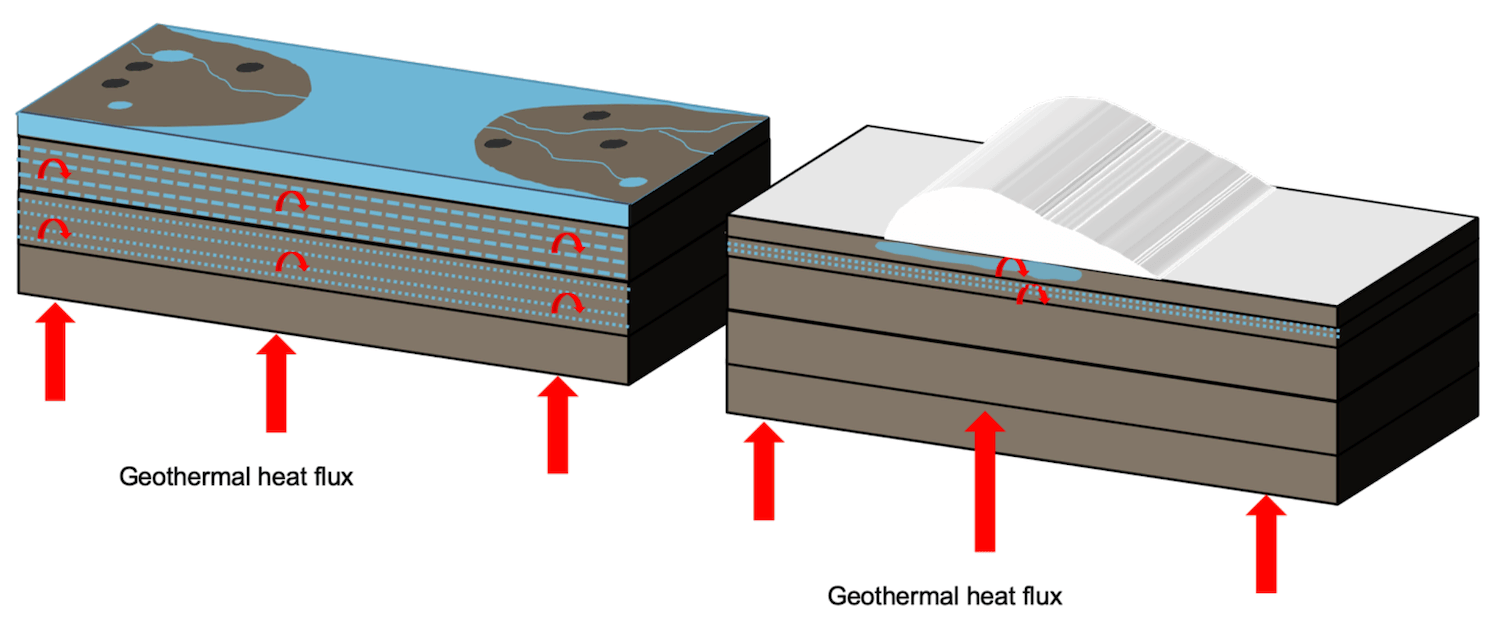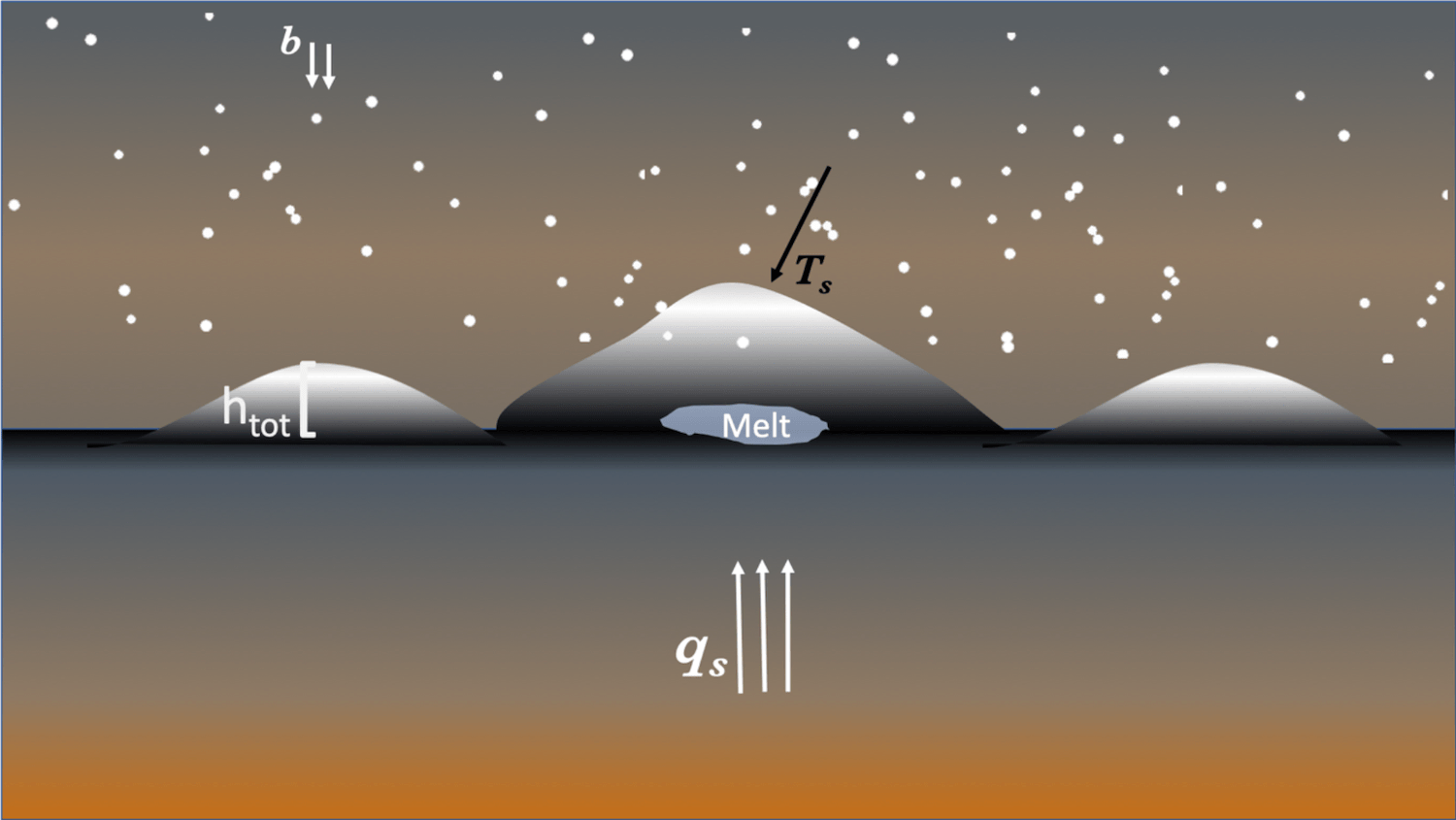- Undergraduate
Bachelor's Degrees
Bachelor of ArtsBachelor of EngineeringDual-Degree ProgramUndergraduate AdmissionsUndergraduate Experience
- Graduate
Graduate Experience
- Research
- Entrepreneurship
- Community
- About
-
Search
All Thayer News
Best Region for Life on Mars Was Far Below Surface
Dec 02, 2020 | by Julie Bonette
New study suggests subsurface melting of thick ice billions of years ago
The most habitable region for life on Mars would have been deep below its surface, likely due to subsurface melting of thick ice sheets fueled by geothermal heat, a new study concludes.
The study, published today in the journal Science Advances, used a model designed and constructed by co-author Jacob Buffo, a postdoctoral researcher working in Dartmouth engineering professor Colin Meyer’s lab, to simulate the physical and thermal evolution of thick Martian ice sheets.
“Using the model, we wanted to determine if environmental conditions existed in Mars’ history that would allow the base of the ice sheets to melt,” said Buffo. “If melt can occur, it has important implications for the generation of fluvial features, such as ancient riverbeds, on Mars’ surface, as well as the production of potentially habitable environments on ancient Mars.”

Two possible endmember aqueous environments on Mars during the Noachian. (Left) Warm and wet view of early mars where liquid water can be stable on the surface. (Right) Cold, arid view of early Mars, where liquid water is mostly generated in the subsurface by intermittent melting of snow and ice. The curly red arrow show where hydrothermal reactions could take place.

Schematic showing the setup of our model. For a given snow accumulation/precipitation rate of b (mm yr-1), total thickness of the snow/ice slab (htot), and surface temperature (Ts), we solve for the surface heat flow (qs) that can produce meltwater. Melt is only produced for the thickest of the ice slabs.
Researchers hope their work may help answer a key lingering question in Mars science known as the faint young sun paradox. Over time, our sun has gradually brightened and warmed the surface of planets in our solar system by fusing hydrogen and helium to generate energy. About 4 billion years ago, the sun was much fainter, so the climate of early Mars should have been freezing. However, the surface of Mars has many geological and chemical indicators, such as water-related minerals, that suggest the red planet had abundant liquid water about 4.1 billion to 3.7 billion years ago, during the Noachian era. This apparent contradiction between the geological record and climate models is the faint young sun paradox.
“I and my co-authors propose that the faint young sun paradox may be reconciled, at least partly, if Mars had high geothermal heat in its past,” said lead author Lujendra Ojha, an assistant professor in the Department of Earth and Planetary Sciences in the School of Arts and Sciences at Rutgers University–New Brunswick.
The team of researchers, which also included scientists at Louisiana State University and the Planetary Science Institute, examined various Mars datasets to see if heightened geothermal heating would have been possible in the Noachian era, and found that the conditions needed for subsurface melting of thick ice sheets would have been ubiquitous on ancient Mars. Even if Mars had a warm and wet climate 4 billion years ago, with the loss of the magnetic field, atmospheric thinning, and subsequent drop in global temperatures over time, liquid water may have been stable only at great depths. Therefore, if life ever originated on Mars, it may have followed liquid water to progressively greater depths.
Scientists soon will be able to better assess the role of geothermal heat in the habitability of Mars thanks to NASA’s Mars InSight spacecraft, which landed in 2018.
For contacts and other media information visit our Media Resources page.
